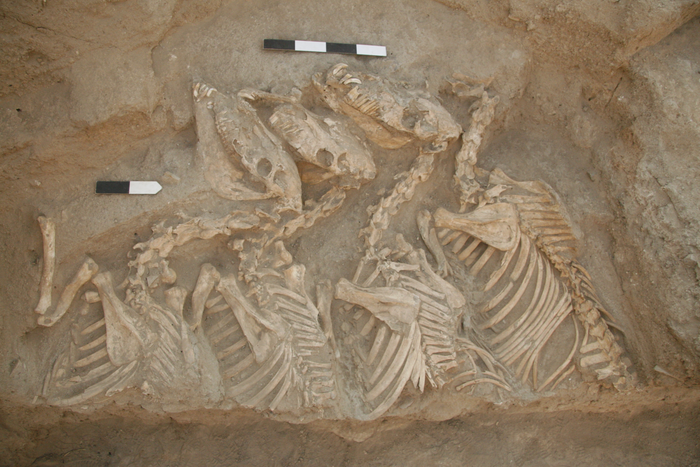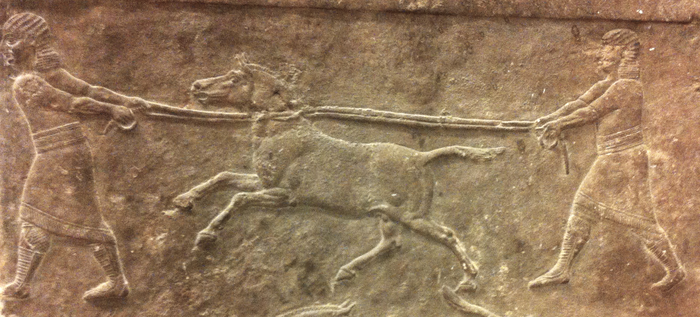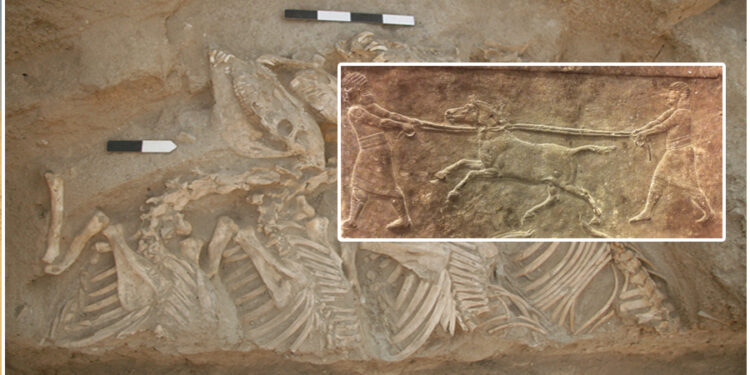The ancient equines known as the Kung as of Syro-Mesopotamia frequented the region 4,500 years ago. The stocky horse-like animals, which arrived long before tamed horses, were highly esteemed and employed for carrying four-wheeled carts into combat, according to James Gorman of the New York Times.

According to Isaac Schultz of Gizmodo, a genetic analysis using ancient skeletal remains, genetic material from the last surviving Syrian wild ass, and an investigation of the genus Equus’ evolutionary history revealed that the kuna was a cross between a female donkey (Equus Africanus asinus) and a male Syrian wild ass (Equus hemionus hippos).
According to a statement from the French National Centre for Scientific Research, the discovery is the earliest human-made hybrid documented in the archaeological record and suggests that Kung as were bred to be faster and more robust than donkeys and more manageable than wild asses, also known as onagers or hemiones. The results of the genomic analysis were reported in Science Advances this month.
Archaeologists discovered the kuna remains in a 4,500year-old royal burial site in Aleppo, Syria, in the early 2000s, according to Science’s Tess Joosse.
Hundreds of horse skeletons were discovered buried alongside royals, none of which matched the characteristics of any known equine species. According to Tom Metcalfe of Live Science, study co-author Jill Weber, an archeologist at the University of Pennsylvania, the skeletons could have been Kung as because marks on the teeth and patterns of wear suggested the animals were purposefully fed rather than left to graze and wore bit harnesses in their mouths.

Desert conditions are harsh. Researchers used advanced sequencing technologies to compare the bits and pieces of DNA from the 25 skulls collected from the Umm el-Marra site because the DNA was poorly preserved, according to Science.
According to Gizmodo, researchers compared the findings to an 11,000-year-old equid sample from the Göbekli Tepe archaeological site in Turkey, as well as genetic material from a preserved museum specimen of the last surviving wild Syrian ass that went extinct in 1929.
The team discovered that the kanga’s paternal ancestry belonged to the Syrian wild ass and matched the species of the sample from Turkey using Y-chromosome fragments. According to Gizmodo, they also confirmed that donkeys were the maternal lineage.
“We recognized these were equids [horse-like creatures] from the skeletons,” says research author Eva-Maria Geigl, a genomicist at the Institut Jacques Monod, to Live Science. “But they didn’t fit the measurements of donkeys, and they didn’t suit the measurements of Syrian wild asses.” “They were different in some way, but it wasn’t evident what that difference was.”
Desert conditions are harsh. Researchers used advanced sequencing technologies to compare the bits and pieces of DNA from the 25 skulls collected from the Umm el-Marra site because the DNA was poorly preserved, according to Science.
The kuna, like other animal hybrids such as the mule and the liger, was sterile. According to Gizmodo, they had to be purposely created by mating a female donkey with a male wild ass. Because male wild asses could run faster than donkeys, catching these animals alone demonstrates the ancient Mesopotamian communities’ technological ability.
The breeder’s obvious choice of a female donkey indicated the intricacy of the mating plan for combining multiple desirable features in these ancient societies. According to Science, because the mother was domesticated, it would have been easy to maintain her in custody while the young were reared.
“This is an excellent example of the amount of organization and management procedures required to maintain these animals alive,” says zooarchaeologist Benjamin Arbuckle of the University of North Carolina at Chapel Hill, who was not involved in the research. “It reminds me a lot of modern zoo administration.”























